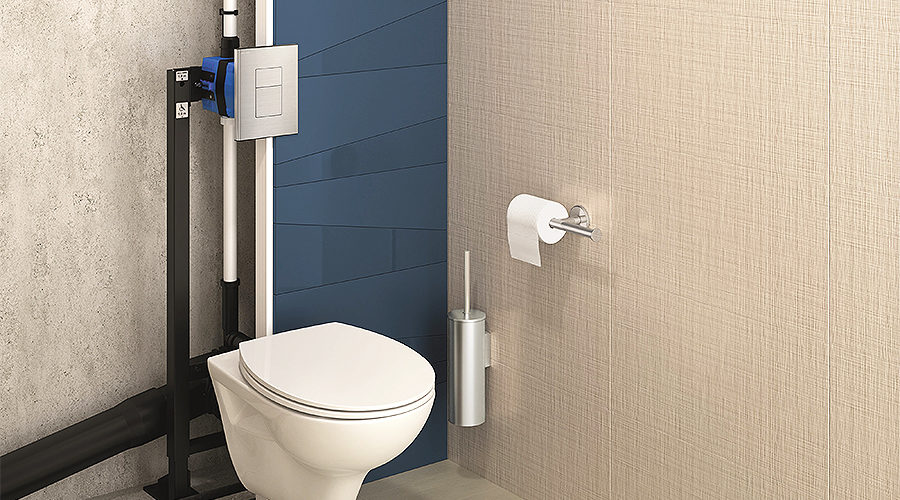A recent increase in cases of Legionnaires’ disease in the UK has prompted research into toilet cisterns as a potential source of infection. Eve Wellard, Marketing and Communications Manager at DELABIE, looks at innovative alternatives to cistern-flush WCs to prevent the problems associated with stagnant water.
Delabie
Legionella in the UK
Cases of legionella are increasing in the UK. Legionnaires’ disease is already under reported by a factor of 10. It is often simply classed as pneumonia without identification of the causative agent. Research estimates that the reality could be as high as 4000 to 6000 cases every year.
Following lockdown in the UK, the risk of Legionnaires’ disease has greatly increased, due to water stagnation and an absence of normal control measures.
COVID-19 has very similar symptoms to Legionnaires’ disease and fatality is often due to secondary pneumonia. There is evidence emerging that this secondary pneumonia could be Legionnaires’ disease.
The cistern situation
Typically, risk assessment for legionella in public buildings has concentrated on taps and showers, and there has been little awareness of toilets as a contamination source. Toilet cisterns must also now be recognised as a potential source of infection, as they contain around 9l of water stagnating at room temperature. Scale and rust build up results in biofilm, providing an ideal environment for bacterial proliferation.
Until recently, very few studies have been able to provide an accurate picture of the situation, and there has been a lack of viable alternatives to the cistern-flush system.
Case studies
According to new research, Legionnaires’ disease can be spread through toilet flushing, which releases invisible ‘plumes’ of contaminated water bioaerosols up to 1.5m into the air.
This poses a severe risk to vulnerable people, as seen in a Parisian hospital, where two patients contracted Legionnaires’ disease through inhaling contaminated toilet water that was aerosolised during flushing.
Legionella bacteria was found in the room’s toilet bowl water, but not the room’s shower or sink.
The consequences of this elevated risk are widespread. In 2021, legionella was found in a small number of Thameslink Class 700 train toilets. On discovery, Thameslink locked the toilets and removed the trains from service to drain, bleach and refill the tanks.
Innovative solutions
An innovative solution to prevent bacterial development in toilet cisterns is to remove the cistern altogether. With a cistern-less direct flush WC, the valve connects directly to the mains supply, a system that can be retrofitted into a wide variety of environments.
The powerful flush is instantly available, with a second flush requiring no refill time, making it a much more suitable option for public places with intensive use. The technology is available with an anti-blocking system to prevent misuse and day-to-day wastage, and soft-touch operation to ensure user comfort, even during busy periods.
Electronic models provide touch-free activation, once again minimising the potential spread of bacteria. To reduce stagnation, a duty-flush function is recommended to purge the pipework during periods of inactivity.
Conventional WCs with cisterns are installed in public and commercial places because the initial investment can seem lower, however, this soon proves to be a false economy.
The multiple advantages of direct-flush WC systems – improved hygiene, water savings, reduced maintenance and simple servicing – very quickly make the technology more economical, while preventing the problems associated with stagnant water in cisterns.









